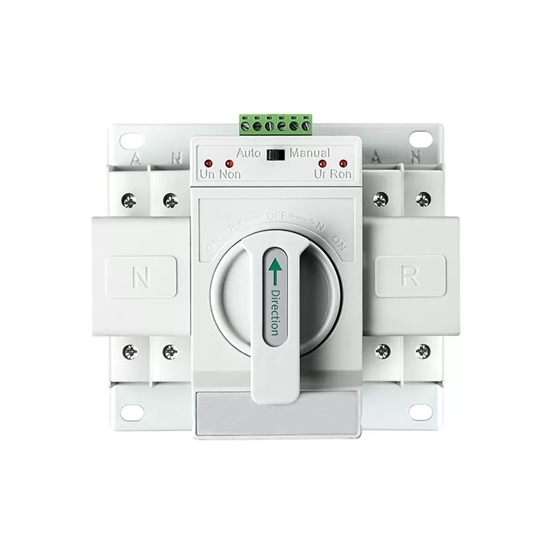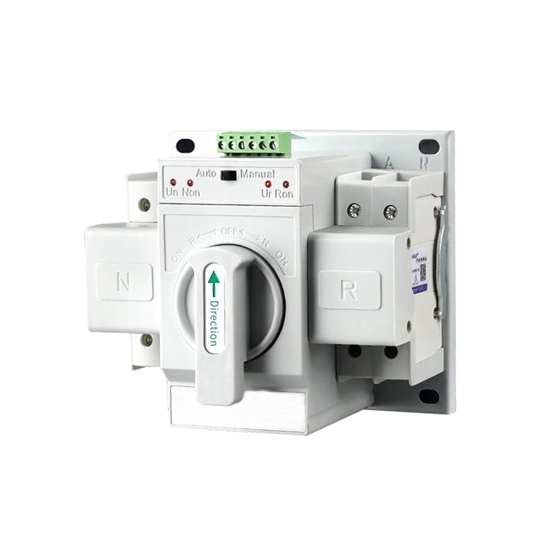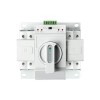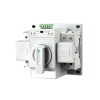



- Stock: In Stock
- Model: RDDLZ-ATS-SP
- Weight: 1.00
- SKU: RDDLZ-ATS-SP
Available Options
An automatic transfer switch (ATS) is a device used to automatically transfer power supply between two sources in an electrical system. It constantly monitors the voltage and frequency of the main power source and, in the event of a failure or abnormality, it swiftly switches the load to the backup power source.
Features
- ATS has overload, short circuit protection, and comes with function of output closing signal.
- With the function of normal power ON, dual power OFF, standby power ON.
- Adopting high performance micro circuit breaker, with circuit breaker breaking capacity and characteristics.
- Simple structure, easy & reliable operation, no noise, small impact, and long service life.
- Suitable for the illuminating circuits of commercial buildings, shopping mall, banks, and high-rise buildings where the power supply can not be cut off for a long time.
Specification:
- Model: RDDLZ-GCQ2-63/2
- Working Frequency: 50/60 Hz
- Rated Voltage: AC 230V
- Rated Current: 63A
- Rated Insulation Voltage: 690 VAC
- Rated Impulse Withstand Voltage: 8 kV
- Working Voltage: AC 110-120V, AC 220-240V
- Function Display: indicator light display
- Operation Method: auto and manual
- Conversion Method: auto switch and auto reset
- ATS Grade: CB grade
- Transfer Action Time: ≤2s
- Usage Level: AC-33iB
- Standard: Compliance to IEC947-6-1, GB14048.11
Dimension (Unit: mm)
Structure
Connection
Wiring Diagram
Tips: How Does the Automatic Transfer Switch Work?
The automatic transfer switch continuously monitors the primary power supply and detects any abnormalities. When a power failure or disruption occurs, the ATS quickly activates the secondary power source. It does so by opening the circuit with the primary power supply and closing the circuit with the backup power source. This transfer of power happens within milliseconds to minimize interruption to the connected electrical systems. The ATS incorporates various control mechanisms, such as relays, sensors, and programmable logic controllers, to monitor the power sources and facilitate the transfer process. It also includes safety features to prevent simultaneous connection of both power sources, protecting against potential damage or dangerous backfeeding.
